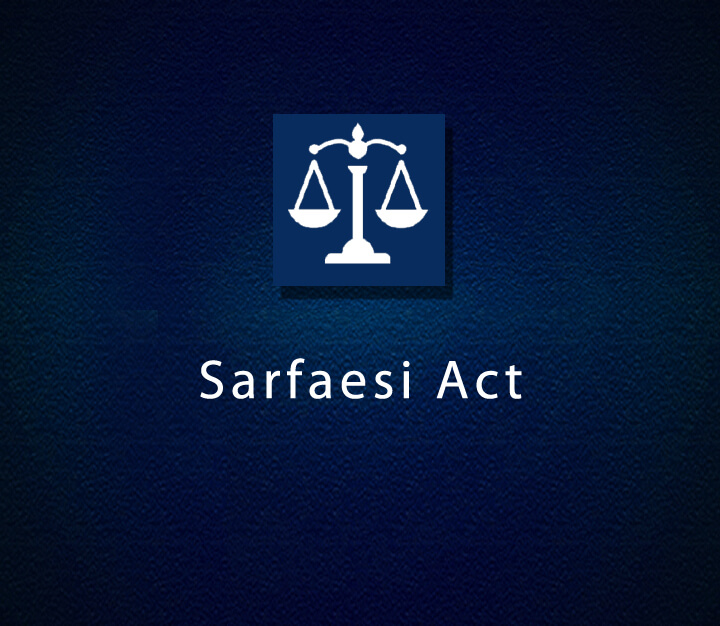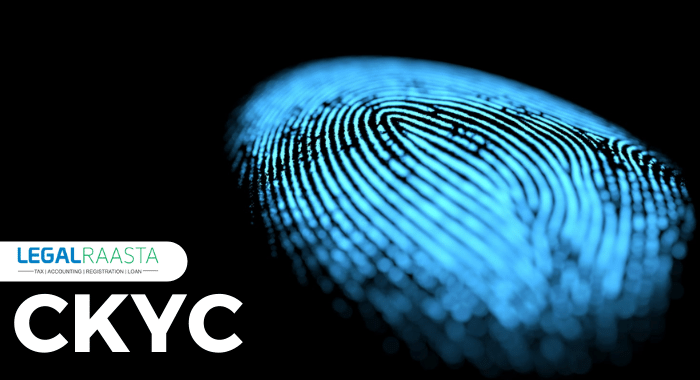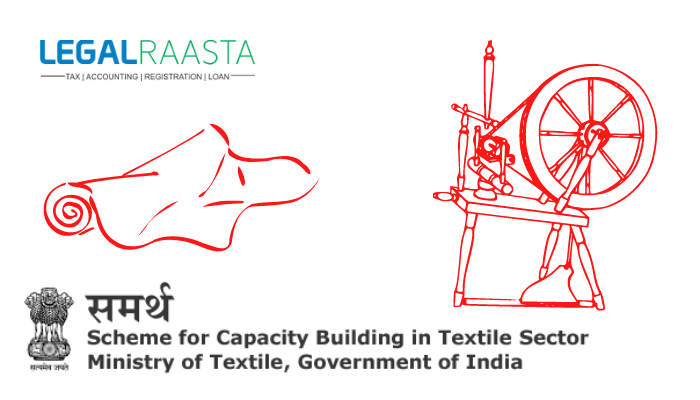SARFAESI ACT
The financial sector of India has consistently assumed a critical part in developing economies. Consequently, it is truly significant that the security privileges of banks ought to be ensured. SARFAESI Act 2002 advantages banks and financial institutions with powers to handle various kinds of bad asset issues.
SARFAESI ACT, 2002
SARFAESI Act 2002 was passed on seventeenth December 2002 to help Indian lenders recover their outstanding dues as fast as possible. SARFAESI Act 2002 (Securitization and Reconstruction of Financial Assets and Enforcement of Securities Interest Act) empowers financial institutions of India to distinguish and amend the problems related to NPAs (Nonperforming assets). It also lets the banks and other financial institutions of India sell residential or business properties with the end goal of loan recovery.
Objectives of Securitization and Reconstruction of Financial Assets and Enforcement of Securities Interest Act, 2002
The objectives of the SARFAESI Act are provided below :
- Specifies the legal framework identified with the scanning activities in India.
- Mentions the procedures for Non – performing assets transfer to the asset reconstruction companies for their reconstruction purpose. This allows fast and effective recovery of NPAs with respect to banks and FIs.
- Allows financial institutions and banks to sell properties (business or residential), in case the borrower fails to reimburse their loans.
- Confers powers to the financial institutions to take custody of the immovable property that is hypothecated or charged for debt recovery.
- Imposes the security interest with no interspecific legal framework identified with the scanning activities in India.
Applicability of SARFAESI Act
The SARFAESI Act regulates the securitization and reconstruction of financial assets. The Act provides a focal database of security interests based on property rights or matters associated therewith or incidental thereto:
- Registration and regulation of Asset Reconstruction Companies (ARCs) by the Reserve Bank of India.
- Facilitating securitization of financial assets of banks and financial institutions with or without the advantage of underlying securities.
- Advancement of seamless transferability of financial assets by the ARC to procure financial assets of banks and financial institutions through the issuance of debentures or bonds or some other security as a debenture.
- Entrusting the Asset Reconstruction Companies to raise funds by issue of security receipts to qualified buyers.
- Facilitating the reconstruction of financial assets which are obtained while exercising powers of enforcement of securities or change of the management or different powers which are proposed to be presented on the banks and financial institutions.
- Presentation of any securitization organization or asset reconstruction organization registered with the Reserve Bank of India as a public financial institution.
- Characterizing ‘security interest’ to be any kind of security remembering mortgage and change for Immovable properties given for due reimbursement of any financial assistance given by any bank or financial institution.
- Classification of the borrower’s account as a non-performing asset as per the directions given or under guidelines issued by the Reserve Bank of India from time to time.
- The officers authorized will exercise the rights of a secured creditor for this sake as per the rules made by the Central Government.
- An appeal against the action of any bank or financial institution to the concerned Debts Recovery Tribunal and a second appeal made to the Appellate Debts Recovery Tribunal.
- The Central Government might set up or cause to be set up a Central Registry for the purpose of registration of transactions identifying with securitization, asset reconstruction, and formation of the security interest.
- Utilization of the proposed legislation at first to banks and financial institutions and strengthening of the Central Government to broaden the use of the proposed legislation to non-banking financial companies and different entities.
- Non-utilization of the proposed legislation to security interests in agricultural lands, loans less than rupees one lakh, and cases where 80%, of the loans, is reimbursed by the borrower.
Features of SARFAESI ACT
Securitization and Reconstruction of Financial Assets and Enforcement of Securities Interest Act, 2002 aims to protect banks and financial institutions from incurring losses. Its features are provided below :
- Enforcement of security interests: The Act enforces security interests by the secured creditors with no involvement of the court. In case of a default by a borrower, the act authorizes the bank or a financial institution to issue a demand notice to the borrower and induces him/her to satisfy off the obligations within sixty days from the date of the notification.
- Reconstruction of financial assets: SARFAESI Act allows the banker and financial institutions to take legitimate measures of the management, sale, settlements, debt restriction, or take any possession under SBI guidelines every now and then.
- Securitization of financial assets and issue security receipts: The primary point of the securitization act is to make accessible the enforcement of security interest for example to take possessions of the assets that were given security for the loan.
- Act as an agent of banks or financial institutions: The SARFAESI Act 2002 acts as the manager of the secured assets given by the financial institutions and ensures that the dues are recovered at an ideal time.
Background
The previous legislation enacted for recovery of the default loans was Recovery of Debts because of Banks and Financial institutions Act, 1993. This act was passed after the recommendations of the Narasimhan Committee – It was submitted to the public authority. This act had made the forums such as Debt Recovery Tribunals and Debt Recovery Appellate Tribunals for expeditious adjudication of disputes as to truly increasing non-recovered dues.
Notwithstanding, there were several loopholes in the act and these loopholes were mis-used by the borrowers as well as the lawyers. This prompted the public authority to introspect the act and this one more panel under Mr. Andhyarujina was named to inspect banking sector reforms and consideration to changes in the legal system.
Procedure
The SARFAESI Act, 2002 gives powers of ‘seize’ to banks. Banks can give notice in writing to the defaulting borrower expecting it to discharge its liabilities within 60 days. if the borrower fails to comply to the notification, the Bank might take recourse to one or more of the accompanying measures:
- take and possession the security for the loan;
- Sale or lease or assign the right over the security;
- Deal with the same or designate any person to deal with the same.
The SARFAESI Act also provides for the establishment of Asset Reconstruction Companies regulated by RBI to gain assets from banks and financial institutions.
The Act provides for the sale of financial assets by banks and financial institutions to asset reconstruction companies. RBI has issued guidelines to banks on the process to be followed for the sales of financial assets to Asset Reconstruction Companies.
Right of borrowers:
The above observations clarify that the SAFAESI act was ready to give the viable measures to the secured creditors to recover their long-standing dues from the Non-performing assets, yet the rights of the borrowers couldn’t be ignored, and have been appropriately incorporated in the law.
The borrowers can whenever before the sale is closed, transmit the dues and try not to lose the security;
In case any undesirable/illegal act is finished by the Authorized Officer, he will be obligated for corrective consequences;
The borrowers will be qualified to get compensation for such acts;
For redressing the grievances, the borrowers can approach firstly the Debt Recovery Tribunal and from there on the Debt Recovery Appellate Tribunal in appeal. The restriction period is 45 days and 30 days respectively.
Preconditions
The act provides four conditions for the enforcement of the rights of the creditor
- the debt should be secured
- the debt should be classified as nonperforming assets by the banks
- the outstanding dues are one lakh and higher and more than 20% of the principal oan amount and interest
- the security cannot be enforced on agricultural land
Recovery methods
According to this act, the registration and regulation of securitization companies or reconstruction companies is performed by RBI. These companies are authorized to raise funds by issuing security receipts to qualified institutional buyers (QIBs), banks, and Financial institutions to claim securities given for financial assistance and sell or lease the same to assume control over administration in case of default. This act makes provisions for two principle methods of recovery of the Non Performing Assets are as follows:
Securitization:
Securitization is the process of issuing marketable securities supported by a pool of existing assets such as auto or home loans. After an asset is changed over into a marketable security, it is sold. A securitization organization or reconstruction organization might raise funds from just the QIB (Qualified Institutional Buyers) by forming schemes for obtaining financial assets.
Asset Reconstruction:
Enacting SARFAESI Act has brought forth the Asset Reconstruction Companies in India. It very well may be finished by either proper administration of the business of the borrower, or by assuming control over it or by selling a section or entire of the business or by the rescheduling of payments of debts payable by the borrower enforcement of security interest as per the provisions of this Act.
Further, the act provides Exemption from the registration of security receipts. This means that when the securitization organization or reconstruction organization issues receipts, the holder of the receipts is entitled to unified interests in the financial assets and there is no need for registration unless and otherwise, it is compulsory under the Registration Act 1908.
However, the registration of the security receipt is needed in the accompanying cases:
- There is a transfer of receipt;
- The security receipt is creating, announcing, assigning, limiting, and extinguishing any right title or interest in an immovable property
Power of Debt Recovery Tribunal
The debt recovery tribunals have been provided the power to entertain appeals against any misuse of the powers provided to banks. Any aggrieved individual by any order given by the debt recovery tribunal may go to Appellate Tribunal within thirty days from when the date of the order of Debt Recovery Tribunals.
Role of High Court
The act empowers to take the matters to High Court only in some matters which are related to the implementation of the said act in Jammu and Kashmir. Nonetheless, High Court has been entertaining writ petitions under Article 226 which is the Power to issue writs of the Constitution of India.
Proposed Amendments to the act
The government had approved a bill to amend the act. The Enforcement of Security Interest and Recovery of Debts Laws (Amendment) Bill, 2011, amends two Acts — SARFAESI Act 2002, and Recovery of Debts Due to Banks and Financial Institutions Act, 1993 (DRT Act). Through these amendments:
Banks and asset reconstruction companies (ARCs) will be permitted to change over any part of the debt of the defaulting organization into equity. Such a conversion would suggest that lenders or ARCs would will in general turn into an equity holders as opposed to being a creditor of the organization.
The amendments also permit banks to offer for any immovable property they have put out for auction themselves, in the event that they don’t get any bids during the auction. In such a scenario, banks will actually want to adjust the obligation with the sum paid for this property. This enables the bank to secure the asset partially satisfaction of the defaulted loan.
Banks would then be able to sell this property to another bidder sometime to clear up the debt totally.
Conclusion
However the enactment of the SARFAESI Act sought to prepare blocked funds of the banks in the non-performing assets, the various provisions of the acts have made profound sorrows for the veritable buyers. The various provisions intended to adjust the requirements of the borrowers and the banks, have their equilibrium of favor shifted towards the banks. These powers are, at the majority of the time, is used by the banks to suitable their interests against the interests of the buyers. In such a situation it is appropriate for the common courts to assume more social responsibility for the bigger interest of the borrowers on one hand and to share the responsibilities of the banks to assemble their funds from the numerous non-performing assets.
Related Blogs:










